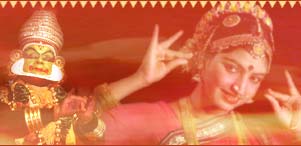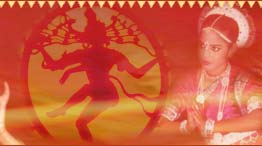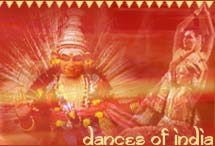It is one of the six major classical dance forms of India. Manipuri dance evolved in the northeastern state of Manipur. Initially a part of temple procedures, Manipuri dance still retains the religious and social element in the performances. All types of Manipuri dances, whether folk or classical or modern, are devotional in nature. The people of Manipur mainly worship the Hindu deities like Radha and Krishna and even their dance portrays the mythological stories revolving around the gods and goddesses. Among the most popular dances of Manipur are, the Ras Lila and Sankirtana based on devotional theme of Radha and Krishna. In Manipur, this dance is important for every socio-cultural ceremony. This dance also creates a hypnotic impact. Apart from this, Manipuri dance is claimed to be one of the most meaningful dances of the world. An interesting fact about Manipuri culture is that, it has recollected the ancient ritual-based and folk dances along with the present classical Manipuri dance form.
History and Evolution
In 15th century, Krishna bhakti was introduced in this form of dance. It is believed that Manipuri dance has also interconnection with Gandharva culture. The presentation of the Indian Manipuri dance on stage started somewhere around the 20th century only. The major credit for the popularity of Manipuri dance form goes to the acclaimed Bengali poet and philosopher, Rabindranath Tagore. He witnessed this beautiful dance form for the first time in 1920 and immediately fell in love with it. Tagore even introduced the Manipuri dance in his university, Shantiniketan. Even today, traditional Manipuri dance is taught in Shantiniketan.By mid-seventeenth century, a complete collection of songs and dances of Bangla origin took birth in Manipur. It is said that Manipur is a paradise on earth where nature has been extra generous in her beauty. From the early times dance, music and religion is interlinked in Manipur. The Lai Haroba, a sacred dance depicts the Creation, and is considered the ancestor of Manipuri as seen today.
Significance
The traditional Manipuri dance mainly symbolizes soft, lyrical and elegant movements which draw attention of the audience. Folklore of Manipuri people is rich in quality and their folk dances are simple but very graceful in rhythm. In Manipur, dances are amusing, religious and spiritual.
Attire and Makeup
For Manipuri dance, female dancer wears tight-fitting 'choli' made of velvet, sequined wide bordered skirt with a translucent veil and a conical cap of black velvet decorated with pearls. Male dancers wear a 'dhoti' embroidered with bands wrapped around their chest ending in flaps falling over the waist with tall peacock feather crown on the head. In other forms of Manipuri dance, both men and women wear costumes of silk or satin which are heavily embroidered. As for makeup, pink color is used as a base. A dark kohl pencil is used for outlining the eyes and mascara is applied to make the eyes attractive. To add the finishing touch, red color lipstick and red bindi is applied.
Postures
Delicate, expressive and elegant movements are the main ingredients of Manipuri dance form. The dancers take care of the movements which are generally round without any jerk or sharp edge. Quite unlike the other classical Indian dance forms, while performing Manipuri dance that feet of the dancer should not hit the ground too hard. Whenever the dancer puts his/her feet on the ground, the front part of the feet has to touch the ground first. The facial expressions in the dance form are very delicate and graceful. The complete performance reflects devotion and sophistication. Another exciting feature of Manipuri dance is the 'Pung Cholam' or 'Drumdance', in which dancers beat the drum known as 'Pung' while dancing with breathtaking leaps and turns to a fast rhythm.
Music
The music required for the dance is drawn from various instruments, namely 'Pung' (a drumming instrument), small cymbals, 'Pena' (a stringed instrument) and wind instruments such as a flute. Male artists act as drummers and are trained to dance with the Pung while drumming.
Famous Personalities
Guru Bipin Singha, Guru Nileshwar Mukherjee, Guru Senarik Rajkumar, Guru Chandrakanta Singha, Guru Nilmadhab Mukherjee, Guru Haricharan Singha, Bibhaboti Devi, Kalabati Devi, Preeti Patel and Tamanna Rahman are some of the famous Manipuri dancers.




